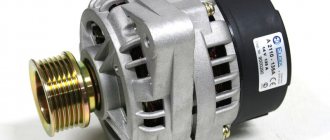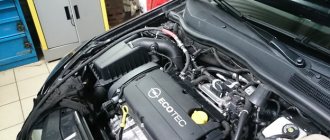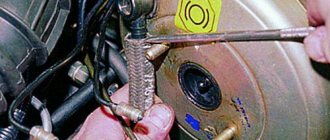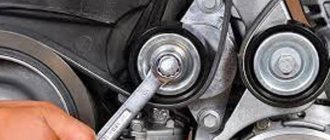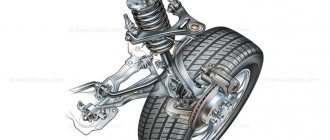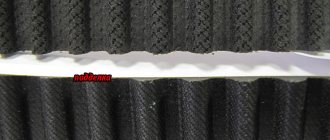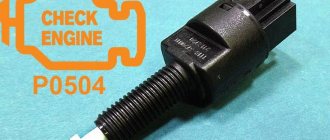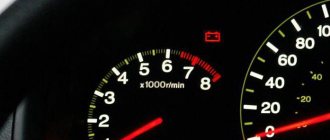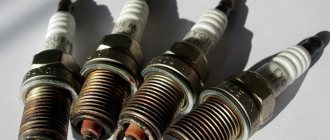Drivers often wonder why there is a hum in the car when driving. After all, the increased level of noise in the cabin causes unnecessary discomfort, making the trip quite unpleasant. It’s not for nothing that now, in addition to all other indicators, automakers indicate the level of noise insulation. Also, increased noise in the interior may indicate design flaws or malfunctions. Therefore, if you notice the appearance of a new noise while driving, most likely your car is signaling a breakdown.
In this regard, experts do not recommend making solid noise insulation; in this case, you simply will not be able to recognize the problem in a timely manner and fix it in a timely manner.
Natural noise
Why is there a hum in the car when driving? This question is often asked by frightened new car enthusiasts. After all, it seems to them that this is a harbinger of a serious breakdown. Yes, sometimes a car makes noise when it breaks down, but often the reason for this phenomenon is natural noise. They arise during the operation of certain mechanisms, and it is almost impossible to completely eliminate them.
Quite natural noise includes the operation of the engine and exhaust system, of course, if they do not exceed certain indicators. Also, you can often hear a hum in the cabin when driving on a not very good road. It occurs due to the tire tread catching on uneven roads. Tire manufacturers have been struggling with this problem for many years, but cannot solve it. The hum can also be caused by oncoming air resistance. This is especially evident in strong headwinds and high speeds. All of the noises listed are not dangerous and you should not be afraid of them.
What and where whistles
One of the most common causes of whistling is a loose alternator belt. If this happens when the car has just been started or in damp weather with high air humidity, then, in general, there is nothing really dangerous. There is no reason to worry, especially if there is a high load on the generator, that is, electricity consumers are turned on.
If the squealing continues while driving, you should be wary. The belt may make an unpleasant sound due to normal wear and tear. Grains of sand or small debris caught between the pulleys and the belt can also cause noise.
Unnatural noises
Another category of hum includes signs of breakdowns. As a rule, the cause of the hum is faulty bearings. The breakdown of some of them is quite dangerous. Therefore, it is advisable to eliminate the source of noise as soon as possible. To do this, you need to know that different bearings hum differently. More precisely, their sound is approximately the same, but by the place where it comes from and how it reacts to your various actions, you can quite accurately determine the source of the unpleasant sound.
Most often, you can observe the howling from the front of the car. The hum is quite strong. It is often immediately noticeable that he is coming from a certain side of the car. If you notice exactly this phenomenon, then most likely the problem is in the wheel bearing. If you stop and touch the hub, it will probably be hot. With this problem, there is often an increase in noise when turning. This way you can determine which bearing is “sick”. An increased hum when turning right indicates problems with the right bearing. Accordingly, if all this happens when turning left, the problem is with the other hub.
It is approximately the same way to determine if the rear wheel bearings are faulty. All hub malfunctions must be repaired immediately after detection. A bearing that gets stuck while moving is guaranteed to lead to an accident.
A hum coming from the engine side may indicate a malfunction of a number of bearings. Therefore, here you need to pay attention to additional signs. An increased engine temperature indicates a pump malfunction. After all, a failed bearing prevents the device from performing its function normally. If you experience a hum while driving, and at the same time the motor begins to overheat, check the pump immediately. It is likely that the bearing will need to be replaced.
If you delay the replacement, then instead of a hum, a rather unpleasant knock will appear. Also, such a hum can be caused by the generator bearing. In this case, you can observe a decrease in the charging rate. True, this can only be assessed on cars equipped with a voltmeter.
By the way, if your car does not have soundproofing of the engine compartment on the engine side, then do not be surprised by this problem.
Sometimes the hum is not constant, but only when the clutch is pressed. The problem here is the release bearing. To eliminate the unpleasant factor, it is enough to replace the failed part.
Sometimes the driver is bothered by noise coming from below. There may be 2 reasons for this. Most often, such a hum occurs when the input shaft bearing on mechanical and robotic gearboxes is destroyed. To clarify the cause, you can perform a simple test. When driving, switch to neutral speed. If the hum is caused by a problem with the gearbox, it will disappear immediately. Please note that to replace the bearing, you will have to disassemble the box. This is a rather complex mechanism; if you are not confident in your abilities, it would be better to contact a car service. On rear-wheel drive vehicles, the hum may be caused by a worn universal joint. It is advisable to replace it.
Also, on some rear-wheel drive vehicles, the rear axle gearbox may howl. The sound is very characteristic, especially during acceleration. This problem is well known to owners of old Lada cars. The problem is solved by adding transmission oil to the gearbox. If this measure does not help, you will have to replace it.
Natural causes
There are a number of natural reasons for the appearance of a hum that are completely unrelated to car breakdowns:
- Strong wind. In a headwind, reducing the speed of the car can reduce the noise. Another way to reduce noise is to move behind large vehicles, shielding them from the wind. In case of crosswind, only reducing the speed will help.
- The windows are slightly open. Windows that are not fully open create a noise due to air passing through them when the car moves. The solution is to close them completely.
- Decorative accessories. Wind deflectors on the doors or moldings on the hood, especially poorly secured ones, can also create a hum.
- Roadbed. A certain road surface causes such a hum when driving that it would be hard to cover your ears. And it doesn’t have to be uneven or with holes. Coarse asphalt may be to blame. Reducing the speed reduces the noise.
- The presence of a trunk or cargo on the roof. The hum can come from a cargo or trunk located on the roof of a car. It vibrates under the influence of the air flow generated when the car moves. Here you either have to endure it and move more slowly, or remove everything from the roof.
Other noises
In addition to the hum, you can hear other sounds in the cabin. The most disgusting phenomenon can be called vibration. Most often, it occurs when the engine mounting mounts have become loose. In this case, when the engine is idling, this phenomenon will only intensify. The problem is solved quite simply. You need to tighten the nuts securing the power unit, and the vibration will go away.
A sharp squealing sound coming from under the hood, which intensifies during acceleration, indicates the need to tighten or replace the alternator drive belt. First you need to assess its condition visually; if there is no damage on it, you should tighten it. Sometimes, this is enough. But, in the case when the squealing still does not stop, replace it with a new one. Experienced drivers always carry a spare alternator belt with them in case it breaks.
FakeHeader
Comments 40
I have a Focus 2 2.0, I press the gas (especially during sharp acceleration) and I hear some kind of metallic ringing - what could it be? Several mechanics checked the motor, they all say it’s not the motor, but they can’t find the reason (((
I have a similar sound coming from under the hood (metal clanging). I traveled a lot for services, no one could determine where it came from. Eventually I discovered it. there is a metal protection on top above the catalyst, the fastenings broke and this sheet lay on the catalyst and rang
It seems like it has already been determined that the problem is in the PowerShift box, namely in the clutch. A common problem for the 3rd Focus with an automatic (robotic) transmission.
I accidentally read your noise, because... I also rummage through the forums. I have the same problem. I would like to know what was the matter? I interrupted all the forums and realized that the problem is in the clutch fork in A (for even gears) because... I get 3 and 5 without noise. It all started with a quiet noise during acceleration and braking, and ended with a grinding noise. In general, I'm afraid to remove the box from the OD, because... They’ll immediately put you in debt, everything is 2-3 times more expensive, I’ve had some trouble with the specialists, well, you can replace one fork, but it’s better to change the entire clutch assembly. because then problems will start with another fork with a release bearing, etc. If you sell, then you can replace the fork, and if for yourself, then buy the entire clutch for about 60 thousand.
I haven't done anything yet. At the next maintenance, the official updated my firmware. After this the car began to accelerate at higher speeds and the noise disappeared. But, be that as it may, this is a temporary measure, and therefore I am wary of the appearance of this noise again. Soon the heat will begin and we will see how the box behaves.
You described the symptoms of a dying internal CV joint.
Thanks for passing by
